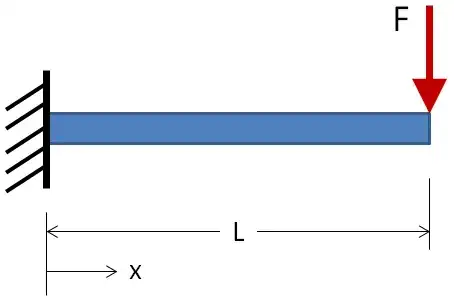In a beam with a a single vertically applied load and a single vertical reaction force, as well as a reaction moment, for example, this one:
We would typically consider the normal stress ($\tau_{xx}(x,y)=\frac{Fxy}{I}$, where $I$ is moment of inertia of the beam vertical cross-section) due to the moment, and the shear stress ($\tau_{xy}(y)=\frac{FQ}{It(x,y)}$, where $Q$ is the first moment of area between $y$ and the neutral axis, and $t(x,y)$ is the thickness of the beam at the point) due to the force, when calculating the effective stress at any point in the range of the beam. We could then, for example, use these stresses to develop an effective stress, $\sigma'$, when determining the factor of safety due to the applied loading.
Why don't we also consider a normal compressive stress $\tau_{yy}$ due to the load and vertical support reaction (ie $\frac{F}{Lt}$)? Is it just too small to matter, or is there no actual stress in that direction?
